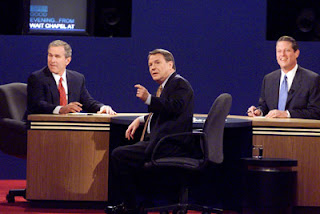 Knight Commission co-chairs William E. Kirwan, chancellor of the university system of Maryland, and R. Gerald Turner, president of Southern Methodist University, have an interesting op-ed in today's Los Angeles Times on college athletes being used in fantasy sports (a topic which Rick blogged about in July). Although the NCAA claims to oppose the use of college athletes in fantasy sports, it has thus far resisted taking any legal or other meaningful action to stop the use. As Kirwan and Turner detail, the NCAA's lack of active resistance seems inconsistent with its mission to prevent college athletes from exploitation and to ensure that there is a clear line drawn between amateur sports and pro sports. I've excerpted their op-ed below.
Knight Commission co-chairs William E. Kirwan, chancellor of the university system of Maryland, and R. Gerald Turner, president of Southern Methodist University, have an interesting op-ed in today's Los Angeles Times on college athletes being used in fantasy sports (a topic which Rick blogged about in July). Although the NCAA claims to oppose the use of college athletes in fantasy sports, it has thus far resisted taking any legal or other meaningful action to stop the use. As Kirwan and Turner detail, the NCAA's lack of active resistance seems inconsistent with its mission to prevent college athletes from exploitation and to ensure that there is a clear line drawn between amateur sports and pro sports. I've excerpted their op-ed below.These online fantasy leagues, which use the real names and statistics of collegiate athletes, raise a crucial question for higher education leaders: Is it amateurism in college sports that has become a fantasy?
To fulfill its fundamental purpose of retaining a "clear line of demarcation between college athletics and professional sports," the NCAA and its member universities need to combat these infringements on athletes' rights and the principles of amateur sports.
Fantasy games allow fans to draft a personal "dream team" of players that earns points based on the real performances of chosen players. There are many such start-up games online, but CBS Sports' is the most prominent. That raises particularly thorny questions for the NCAA and its member institutions because the network essentially funds the NCAA through a broadcast contract worth half a billion dollars a year.
* * *
NCAA rules allow the names and images of athletes to be used only to promote their teams and their games. In fact, neither the NCAA nor the universities acquire any other publicity rights to athletes; they simply cannot license the use of their names or images -- not to fantasy leagues, not to video game companies, not to sportswear companies.
However, CBS Sports and other fantasy league operators believe that they have found a loophole. A recent court ruling found that Major League Baseball players' names and stats are not owned by the individual players or the leagues, but instead are in the public domain. This ruling was made by the U.S. 8th Circuit Court of Appeals in a case involving Major League Baseball Advanced Media and a fantasy league operator. The court decision describes these professional players as being "handsomely" compensated and able to earn "additional large sums" through endorsement contracts.
Legal scholars disagree about whether this ruling applies to amateur athletes who are not compensated for their participation and cannot earn money from endorsements.
We believe that the NCAA, universities and college athletes should take firm positions that this ruling does not apply to amateur sports -- and that all those groups should contact fantasy game operators to formally demand they stop using students' names in these games. Unless the courts clearly decide that amateur athletes' names can be used without consent and for purely commercial purposes, the NCAA and universities have the responsibility to stand up for their athletes and the amateurism principles that should guide college sports.
To read the rest of the op-ed, click here. To learn more about the Knight Commission on Intercollegiate Athletics, click here.




 In defense of this policy LPGA Deputy Commissioner Libba Galloway said "We're focusing on the fact that we're in the sports entertainment business and we have to interact with fans and sponsors. . . . We want to emphasize to our players that they need to be approachable."
In defense of this policy LPGA Deputy Commissioner Libba Galloway said "We're focusing on the fact that we're in the sports entertainment business and we have to interact with fans and sponsors. . . . We want to emphasize to our players that they need to be approachable."



